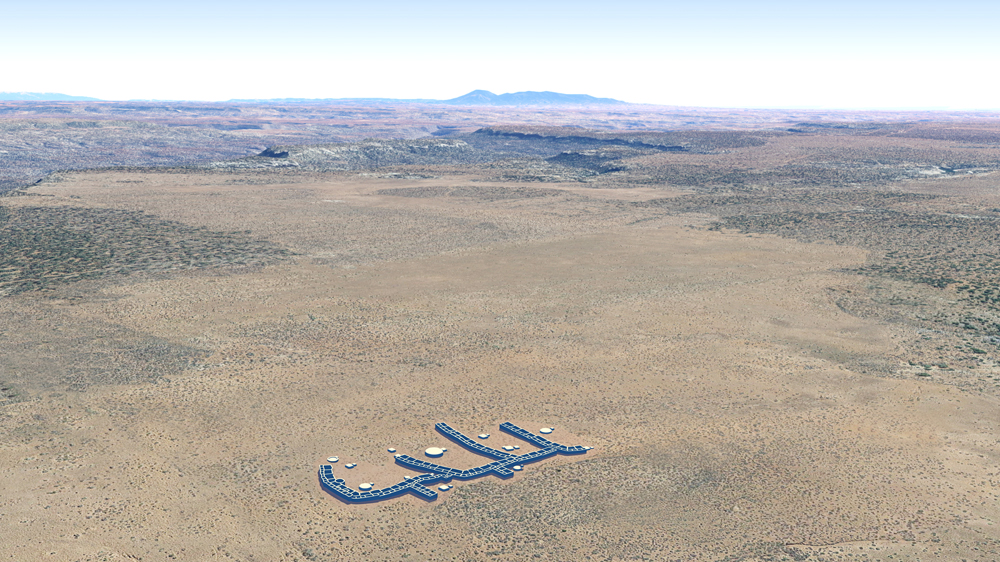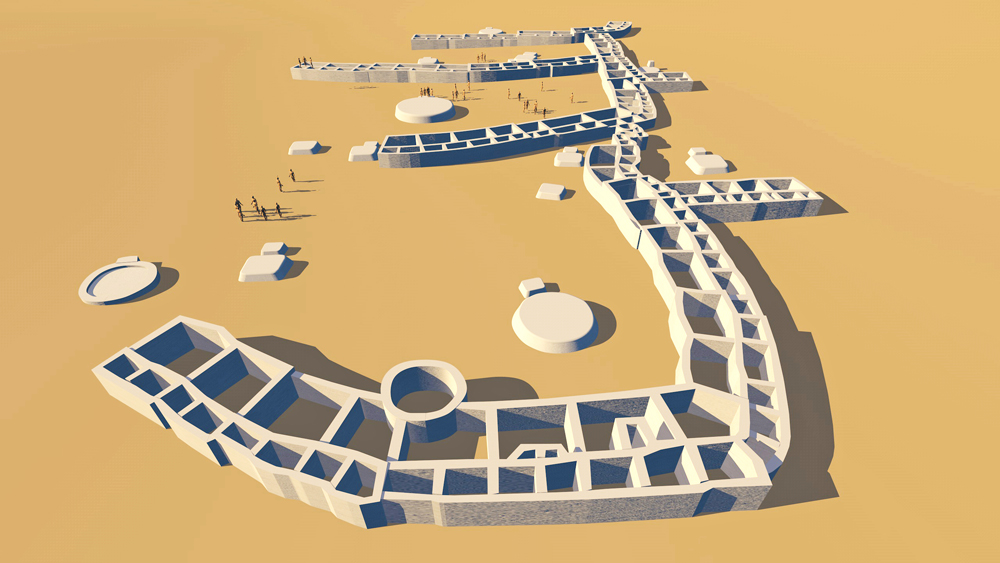
Alkali Ridge Pueblo

Photomontage of CG model of Alkali RIdge Pueblo upon aerial photo of actual site in southern Utah. Sleeping Ute Mountain is seen of the horizon.

Photomontage of CG model of Alkali RIdge Pueblo upon aerial photo of actual site in southern Utah. West Mountain and Twin Peaks East are seen of the horizon.
Alkali RIdge ruin is located in the Northern San Juan Region of Southwestern Utah within view of the landmark Sleeping Ute Mountain. The village, occupied between 700–1100 C.E, represents the earliest form of Ancestral Puebloan architecture built during a time of transition from separate pit houses of hunter-gatherers to a settled agrarian lifestyle with above ground connected assemblies of room blocks.
The village consists of four arched rows that flank public plazas. There is at least one Kiva. 185 units are grouped together in clusters, composed of between thirty to sixty-seven rooms; some of these were used for living, with others used for storing grain and corn. A 400-foot-long wall runs along the west side of the village. Not all of the structures existed or were occupied at the same time. The basic living units were composed of a south- or-east-facing plaza-side large single- room living space backed by two storage rooms.
Alkali Ridge, which was declared a National Historic Landmark in 1964, is currently under the jurisdiction of the Bureau of Land Management in Blanding, Utah.
Elevation is 1963 meters (6440 feet) above sea level.
Location coordinates: 37°40'45.3"N 109°22'41.0"W
37.679248, -109.378063
Construction materials: Wattle and daub construction, with clay/mud roofs ovrer brush and wood purlins.












Data for CG model:
Brew, John Otis. Archaeology of Alkali Ridge, Southeastern Utah. Cambridge: Harvard University Press, 1946.
Lipe, William D. and Mark D. Varien. "Spatial Patterning in Northern San Juan Villages, A.D. 1050–1300." Kiva 66, no. 1 (2000): 91–122.
Morgan, William N. Ancient Architecture of the Southwest. Austin: University of Texas Press, 1994.
.